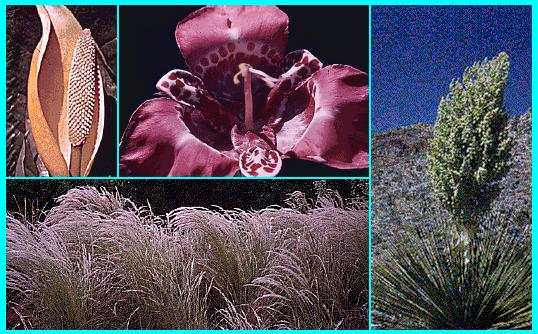Introduction to the Liliopsida
The Monocots


The Monocotyledonae comprise one-quarter of all flowering plant species. They include some of the largest and most familiar groups of plants, including lilies, orchids, agaves, palms, and grasses. Though often described as having a stereotype morphology, the monocots are actually quite diverse, ranging from tiny duckweeds to large palms and climbing vines.
Economically, monocots are perhaps the most important organisms on earth. Our four most important foods -- corn, rice, wheat, and barley -- all come from monocots. Bamboo and palms are a primary source of building materials and fibers in many tropical countries. Sugar cane, pineapples, dates, bananas, and many of our familiar tropical fruits also come from monocots.
Click on the buttons below to learn more about the Monocots.


